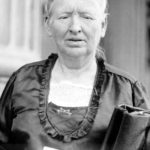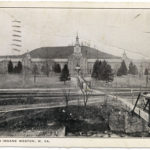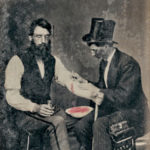People went West for many reasons, but most carried a dream of creating a better life for themselves in this new, undeveloped territory. Homesteading was advertised as attractively as possible, and though emigrants may have prepared for it physically by bringing as many supplies as they could carry, few were prepared psychologically for the intensity of the pioneer experience.
When they reached the vast stretches of the Great Plains after losing equipment, livestock, and perhaps even family members, it became harder to keep believing the propaganda about new railways, bustling towns, and bountiful harvests–because they were nowhere to be seen.
Loneliness and isolation soon took their toll. Women, especially, seemed to find the West filled with nothing but chores amid all the discomforts of a prairie (sod) home filled with insects, snakes, and ugliness. Men who did not realize their dreams of wealth or farming success could easily become depressed; unremitting stress could impact both genders. Hysteria, melancholia, or “nervous exhaustion,” as well as alcohol abuse and violence could destroy isolated prairie families, who seldom had anywhere to turn for help.
Women seemed to succumb to mental illness more than men, but that may only appear so because women wrote more about what they felt and experienced. Diaries from the trail tell a dismal story of death and privation. From Cecilia McMillen Adams’ 1852 diary:
June 25: Passed seven graves . . .
June 26: Passed eight graves . . .
June 29: Passed ten graves . . .
July 1: Passed eight graves . . .









Carla Joinson bravo++ (1) vivid description on Prairie Madness; a subject never previously known to me. (2) Keen writing style. A pleasure to read. Testimony to this; limited use of “the” and “that.” Yeah. While watching Wagon Train on oldies TV, the theme Prairie Madness. And, as you clearly explain, Prairie Madness was rampant. Nasty behaviors highlighted here were included. Super piece of work